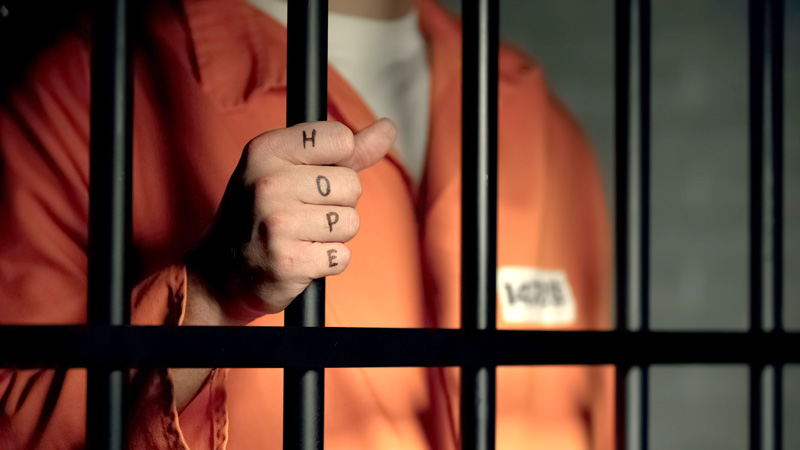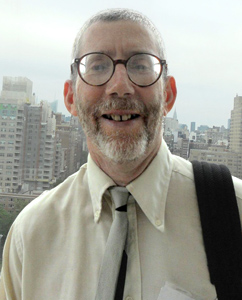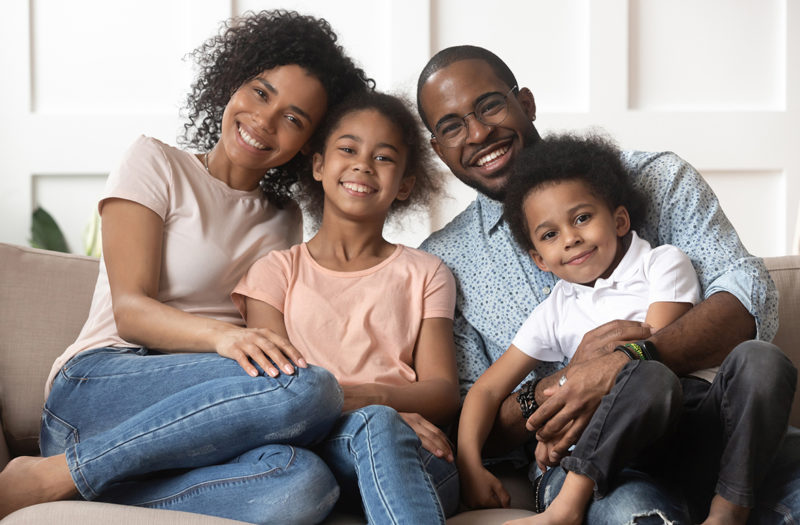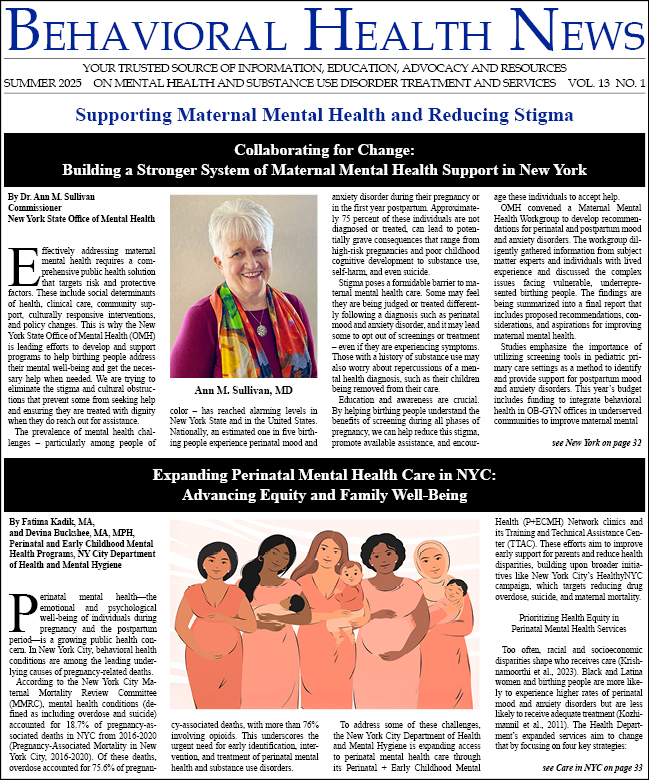Editorial Note: Given the recent NYS correction officers’ strike, this article is especially timely. The strike, driven by concerns over staffing shortages and solitary confinement reforms, has coincided with the tragic deaths of nine incarcerated men (so far). This context underscores the urgency of the issues discussed.

What does “doing time” mean to you? During the Covid pandemic, it meant being stuck at home alone, or having your family drive you crazy. If you’ve been bedridden in a hospital or nursing home with unresponsive staff, you might have felt imprisoned too. Alternatively, novelist Ottessa Moshfegh writes, “living without love is like ‘doing time.’”
Having spent weeks and months on inpatient psychiatric units, I, too, felt trapped, and, when I worked as a peer specialist in an ER, interacted with patients who were handcuffed to their beds by the police because they were “emotionally disturbed.”
However, my passion for supporting (formerly) incarcerated peers with behavioral health challenges, as a certified justice peer specialist, originates from my childhood, when, between the ages of nine and 11, I was repeatedly caught stealing and vandalizing property. Instead of turning me over to the police, my highly educated, middle-class Jewish parents referred me to the Yale University Child Study Center.

Carl Alan Blumenthal, MS, MA, NYCPS
Playing Chinese checkers with a boring psychiatrist for a year, so-called “play therapy,” might have been punishment enough, but the shame of leaving fourth grade early for my appointments was worse due to the whispers of “cuckoo” from my classmates. On the one hand, my dad, who graduated Yale at 19, expected me to follow in his footsteps. On the other, my mom neglected me because she was preoccupied with my younger brother, diagnosed with mental illness at age five by the same treatment program. The result: I began a lifetime in and out of mental health care for bipolar disorder rather than starting young adulthood as a “juvenile delinquent.”
Fast forward 55 years to 2017. While I’m working in the ER of Kings County Medical Center, Brooklyn, I’m volunteering for the prison reform project of the Quaker-affiliated American Friends Service Committee in Manhattan, where I correspond with incarcerated men who need health, education, and legal assistance. (See www.friendsjournal.org.)
Born and raised a Conservative Jew, I joined the Religious Society of Friends because their commitment to social justice was even greater than that of my liberal Jewish community, especially when advocating for mental health and criminal justice reforms.
Quaker Witness on Mental Health and Criminal Justice
At York, England, in 1796, Friends originated “moral treatment” of the mentally ill in a country retreat with what amounted to occupational therapy before establishing in Philadelphia the first private psychiatric hospital in the U.S. (1818). Dorothea Dix, a Unitarian, after visiting the York Retreat, advocated for similar “asylums” in the mid-1800s, which became state mental hospitals later. As designed by the Quaker psychiatrist and architect, Thomas Kirkbride, they were never meant to house more than 250 patients.
Also in the 1790s, the Philadelphia Prison Society, led by Quakers, introduced “solitary confinement” at the Walnut Street Jail and then helped build, in 1832, the Eastern State Penitentiary, isolating each prisoner in a cell where he was supposed to repent based on the notion that “silence is golden.”
Both moral treatment and solitary confinement were meant to be more humane than shackling and crowding the mentally ill and criminally poor into filthy dungeons and by preventing corporal and capital punishment. Of course, “asylums” turned into the warehouses for troubled souls that a century later required “deinstitutionalization,” a watershed that the behavioral health care system is still drowning in. Such early visitors to the Eastern State Penitentiary as Charles Dickens and Alexis de Tocqueville recognized “immoral treatment” when they saw it resulting in severe mental and physical illness. Today, solitary confinement has become the epitome of “a prison within a prison.”
To make a long story short, as asylums grew what was “moral” often became coercive. Friends’ Hospital still exists, but when it became a for-profit 25 years ago, the state required funding of the Thomas Scattergood Foundation in exchange, one of the leading groups devoted to behavioral health care innovation. By acknowledging that “recovery is possible,” moral treatment has made a comeback in its influence on so-called “therapeutic communities,” Soteria Houses, crisis respite centers, and the peer recovery movement in general.
Likewise, Quakers eventually recognized the error of their solitary repentance ways, and in 1975 established the now worldwide Alternatives to Violence Project in New York State that trains those incarcerated in non-violent responses to conflict, thereby lowering recidivism rates. As a form of mutual aid, these trained volunteers then train their compatriots. I, too, have been trained in their methods, and with the help of Judy Meikle, prisons coordinator for the regional New York Quaker Church, and members of my Brooklyn branch, have aided the reentry of several formerly incarcerated Friends who converted to Quakerism while in prison.
On the Trauma of (and Resilience from) Incarceration: One Friend’s Experience
Born and raised in Harlem, Frederick “Rob” Robinson was released from a NYS prison in 2022. After a 20-year sentence and five attempts at parole, he was freed at the age of 63 during Covid as a “compassionate case” into the care of the New York Quaker Church because during his incarceration he had recognized “that of God in every person” by participating in Quaker silent worship (a form of group meditation) led by “outside” Friends, and then becoming a leader of those services himself.
This is just one example of Rob taking the advice of an “old-timer” at NYC’s Riker’s Island Jail the night that Rob was “shipped up the river:” “Do your ‘bid’ the way you can. Don’t let anyone do it for you. You seem smart, motivated, sincere, remorseful. Find guys like yourself—in the law library and education programs. Become a ‘house captain’ (administration envoy). You went to college (graduated from the Ivy League’s University of PA). How come you went to prison in the first place?” When Rob asked, “How will I find them?” the older prisoner replied, “They’ll find you, if you’re lucky before the bookies and dope pushers do.”
To frame my discussion with Rob, I use the Prison Policy Initiative’s prison trauma checklist and my courses from the NYS Academy of Peer Services’ justice peer specialization that emphasize how much more likely peers involved with the criminal justice system are to have experienced adverse childhood experiences (ACEs) as expressed in mental illness and substance abuse that is then worsened by incarceration. This combines the “learned helplessness” of behavioral health care institutions with the further loss of rights known as “imprisonization.”
Social Isolation: Incarceration Removes People From Society and Limits Their Personal Care
Rob: “All I saw for the first ten years was a 40-foot wall. No horizon. When I was transferred to a prison inside a fence, at least I could see the horizon. And at my last place in the Adirondacks, there were the mountains. Not that prison isn’t crowded, but when I was released and got off Amtrack at 34th Street, the platform was so packed I caught my breath, with my arms shaking and sweating. Outside with the noise, cars, and people rushing, I had an anxiety attack. Even though I was motivated and had a good response plan, for the first three months I was a basket case.
Three years later, I still have a lot of work to do, especially because health conditions, like COPD and depression, that began in prison, have worsened. And this despite me being an athlete before. Now I’m not able to work anymore. Unfortunately, even with subsidized housing and food stamps, Social Security doesn’t pay all the bills.”
Family Disconnection: Separates People From Their Social Networks and Loved Ones When Not Abandoned by Them
Rob: “My family abandoned me, and I’m still estranged from my siblings. My mom and dad have passed and my nieces and nephews, who are all grown now, don’t know me. It’s still hard and when on the inside I had no visits, no mail, no goody packages. During birthdays and holidays, you’re locked in a cage with no cards, no joy. Even listening to Christmas carols on the radio is sad. When you’re finally released, who’s there to greet you? At least I was blessed with Quakers in my life, my new family.
Hopelessness: Loss of Autonomy, Boredom, Stultifying Routines, and Lack of Purpose
Rob: “To the nth degree. The minute the judge sentences you and they put the handcuffs on. Plus, you have a double set of rules to follow. Prison infractions can land you in the SHU (secure housing unit or solitary) when you’re not confined to your cell for violations of the “facility clock” or schedule. And then there’s the convict code that is like learning another language, if you didn’t already pick it up on the streets. Between the two, you’re coming and going with no destination in sight.”
Unpredictability: Never Knowing When Arbitrary Infractions Will Be Assessed With Cruelty Often the Result
Rob: “True on both sides of the bars, whether you’re at the mercy of corrections officers or your fellow inmates. But discipline gets a bad rap. Take the prison structure and use it to your advantage by focusing on a job, your education, or participating in a religious group. That’s the kind of discipline that the parole board wants to see, not just following the rules.”
Overcrowding or Solitary Confinement: These Conditions Can Have Negative Effects on Mental Health
Rob: “Yes, being in general population, whether the hallways or mess hall, can be too much, so I would need to chill out in my cell. Never in solitary myself, but saw the effects on those who were, including suicides. And for those who survived, what are their chances on the outside, if they ever make it?”
Routine Exposure to Violence: This Includes Physical Assault and Sexual Abuse by Guards and Inmates, Whether as Victims or Witnesses
Rob: “From the moment you wake up, violence surrounds you and continues all day. It gives the officers something to do and justifies the system to the point that you can’t think about it because it’s ten times worse inside than on the streets. Yes, it’s safer out here in the “real world.”
Triggering Environments: Bright Lights, Loud Noises, Questioning by Staff, and Harsh Handling Can Be Triggering
Rob: “The environment is designed to punish you mentally, physically, and emotionally. The yards are constructed, the walls painted, and even the food made so everything is non-descript. And if you end up in the SHU you really find out what sensory deprivation is about.”
Lack of Rehabilitation That Brands Incarcerated People: “Once an Inmate, Always an Inmate”
Rob: “Sure, it’s an uphill battle, once institutionalized. I was a 40-something guy when I arrived, so I already had a life under my belt. But these younger guys have nothing to fall back on. Still, if you have any pride, you want to get better. I took my eye off the prize. You can’t blame your family and the larger society for everything, though nine out out of ten raised in poverty end in poverty. For the ones who get out and don’t want to change, you might as well go back. All about self-awareness. Not perfection, but progress. You get better every day. You’ve got to change the narrative. More than getting a second chance, you’ve got to be that second chance.
On the inside, I got a certificate in ministry and human services from Union Theological Seminary. But reentry is more than the essentials of food, shelter, and clothing. It’s more recognized now than 30, even ten years ago, especially after Covid. You’ve got to treat the whole person. If you don’t address the trauma of imprisonment, it will trip you up down the road. That means get a trauma therapist like I did. It’s become my life’s work. After Exodus Transitional Communities got me going, I became a case manager for them, in charge of 135 residents at one of their Queens’ housing programs.”
Post-incarceration Syndrome: Addiction Specialist Terence Gorski Coined This Tern to Describe the Trauma That Can Continue After Release. It’s a Combination of Post-traumatic Stress Disorder, Institutionalization, and Other Factors
Rob: “I call it post-traumatic sentencing disorder.”
Conclusion: “Nothing about us without us”
Rob: “Peer support can allow a safe space for those incarcerated to be able to share, explore, and heal from the trauma of involvement with the criminal justice system.”
You don’t have to be formerly incarcerated to become a justice peer supporter, but, fortunately or not, it helps. Helen Skipper, director of the Justice Peer Initiative, who organized the Academy of Peer Service’s curriculum from which I quoted above, was in and out of the criminal justice system for 20 years before she got her degree in the field from the City University of NY’s John Jay College. (See www.cityvoicesonline.org.)
Currently, Rob and I are part of an effort for welcoming recently released incarcerated individuals—trained in the Alternatives to Violence Project—to our Brooklyn church on what we call a “Landing Strip” for mutual support. I hope to not just apply the principles of justice peer support but also learn more from participants’ first-hand knowledge of the criminal justice system.
Carl Blumenthal, carlblumnthl@gmail.com, was a community organizer and health planner for 27 years before becoming a peer specialist in 2002. He has worked in practically every behavioral health care setting.





